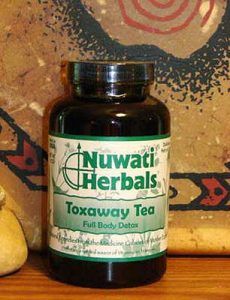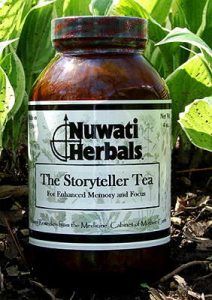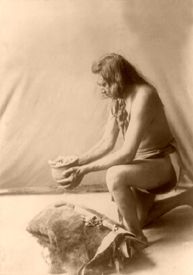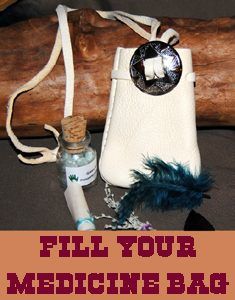Remedies Home A B C D E F G H I J K L M N O P Q R S T U V W X Y Z
J
Jaundice:
- Boswellia – Fragrant resin utilized in various ailments. It should not be used by pregnant, breastfeeding women and children.
- Senna – A large genus of flowering plants found to be helpful in many remedies.
Joint Disease and other Joint Problems
- Devil’s Claw – Used in teas and tonics internally and in poultices externally. It should not be used by woman who are or may be pregnant.
- Feverwort – Used internally and externally in herbal medicine.
- Ginger Root – Utilized as both a spice and medicine throughout the world.
K
Kidney Function and Problems, including Kidney Stones:
- Alfalfa – Utilized in teas or added to food for various medicinal remedies. Avoid if you have an auto-immune problem.
- Buck Brush – Applies to several North American shrubs used in herbal medicine.
- Cattail – Utilized as food, as well as in external and internal medical remedies.
- Dandelion – Used in both foods and internal and external medical remedies
- Devil’s Claw – Used in teas and tonics internally and in poultices externally. It should not be used by woman who are or may be pregnant.
- Goldenrod – Long used for various ailments.
- Grapefruit – Seeds, pulp, and inner rind used for internal conditions.
- Indian Hemp – A type of marijuana it was used to make clothes, rope, and paper as well as boiling the roots into teas for medicinal problems.
- Juniper – Used internally and externally for medicinal purposes. Pregnant women should not use this herb as it has been known to cause miscarriage.
- Native Hemlock – Used by Native Americans as a dye, for tanning hides, making baskets and wooden items, as well as medicinal remedies.
- Oak – Acorns and bark used for various medical ailments.
- Plantain – C onsidered to be one of the nine sacred herbs by the ancient Saxon people and has a long history of use as an alternative medicine dating back to ancient times.
- Rose Hip – The fruit of the rose plant has long been used in teas to soothee various problems.
- Shavegrass – Used for centuries as a remedy for various medical conditions.
- Skullcap – A powerful medicinal herb, it was cultivated Native Americans for use in several remedies. Pregnant women should not take Skullcap.
- Tobacco – Long been important in Native American culture for social, religious, ceremonial purposes as well as in medicinal remedies.
- Uva Ursi – Used medicinally since the second century. Pregnant women should not use it.
- White Pine – The inner bark, young shoots, twigs, pitch, and leaves have long been used by Native Americans in medical remedies.
- Wild Rose – There are hundreds of species that have been used medicinally for thousands of years.
- Wild Carrot – Used as both food and for health conditions.
L
Laryngitis:
- Goldenrod – Long used for various ailments.
- White Pine – The inner bark, young shoots, twigs, pitch, and leaves have long been used by Native Americans in medical remedies.
- Wild Black Cherry – The dried inner bark was traditionally used in tea or syrups for several health problems.
Laxative – See Constipation
Leprosy:
- Sarsaparilla – Used for centuries in a wide variety of medicinal remedies.
- Senna – A large genus of flowering plants found to be helpful in many remedies.
Libido:
- Maca – Used for centuries, Maca is consumed as food and used for medicinal purposes.
- Star Anise – The fruit of a small tree with a licorice-like flavor long used in medicinal remedies.
- Tribulus – This herb has been used in traditional medicine for centuries.
- Wild Yam – Traditionally used as food and medicine.

Nuwati Herbals’ Toxaway Tea – For detoxing, liver health, and skin. Available at Legends’ General Store.
Liver Problems, Disease and Health:
- Dandelion – Used in both foods and internal and external medicinal remedies.
- Ginsing – Numerous specifies throughout the world have been used for thousands of years in medicinal remedies.
- Goldenrod – Long used for various ailments.
- Goldenseal – Used internally and external for medicinal issues. It should not be taken by pregnant women.
- Green Tea – Made solely with the leaves of Camellia Sinensis, it is known for its many helpful properties.
- Jiaogulan – Known for its many health-giving qualities and anti-aging effects.
- Lecithin – Found in several plants, it benefits various body systems.
- Licorice Root – Used as flavoring in food and for herbal remedies.
- Mayapple – Having been long surrounded by folklore, this plant was used for various medical purposes. Because of its toxicity, this herb should only be used by professional Herbalists.
- Red Clover – Traditionally used for several conditions.
- Rosemary – Used for culinary purposes and in medicinal remedies.
- Schisandra – A genus of shrub that has many medicinal uses.
- Senna – A large genus of flowering plants found to be helpful in many remedies.
- Thistle – This flowering plant of the daisy family, has been used for some 2,000 years for medicinal remedies.
- Yellow Root – Though toxic in large doses, Native Americans made a tea of it to treat several medical problems.
Low Energy: See Energy
Lymphatic Issues:
- Buck Brush – Applies to several North American shrubs used in herbal medicine.
- Wild Black Cherry – The dried inner bark was traditionally used in tea or syrups for several health problems.
M
Malaria:
- Chokecherry – Used as a source of food and medicine, it was considered one of the most important herbs in Native American medicine.
- Dogwood – B ark, berries, and twigs used in decoctions internally and externally.
- Gentiana – Extremely bitter herb used for both internal and external problems. May cause irritation in persons who have ulcers, and may also cause headache, nausea or vomiting.
- Guarana – Containing caffeine, it has many of the same effects as coffee.
- Gymnema Sylvestre – Has been used as natural treatment for diabetes for nearly 2,000 years.
- Licorice Root – Used as flavoring in food and for herbal remedies.
Measles:
- Dogwood – Bark, berries, and twigs used in decoctions internally and externally.Sassafras – Used extensively for food and medicine by Native Americans long before European settlers arrived.Stoneseed – Seeds used for several medical ailments.

Nuwati Herbals’ Storyteller Tea – For memory, focus, and improved mental functions. Available at Legends’ General Store
Memory:
- Bee Pollen – One of the oldest health foods used by man, it is mixed with food or drinks, or as a pill supplement today.
- Eleuthero – Dried roots have been used for centuries. People with medicated high blood pressure should consult their doctor, can cause insomnia.
- Ginko Biloba – One of the most ancient trees in existence, it has been used for food and medicine.
- Ginsing – Numerous specifies throughout the world have been used for thousands of years in medical remedies.
- Lecithin – Found in several plants, it benefits various body systems.
- Rosemary – Used for culinary purposes and in medicinal remedies.
Menopausal Symptoms:
- Alfalfa – Utilized in teas or added to food for various medicinal remedies. Avoid if you have an auto-immune problem.
- Black Cohosh – Roots of the plant were used in teas for various ailments.
- Chasteberry – Berries and flowers used in teas. Pregnant or breastfeeding women should not take chasteberry.
- Dong Quai – Used for over a thousand years to treat several conditions.
- Maca – Used for centuries, Maca is consumed as food and used for medicinal purposes.
- Red Clover – Traditionally used for several conditions.
- Sage – Used for thousands of years in cooking and like other culinary herbs, it has long been thought to be a digestive aid aid and appetite stimulant.
- Star Anise – The fruit of a small tree with a licorice-like flavor long used in medicinal remedies.
- St John’s Wort – Most commonly known as an anti-depressant, it also has other medical uses.
- Wild Yam – Traditionally used as food and medicine.
Menstrual Cramps and Pain:
- Allspice – Dried unripe berries have long been used teas.
- Black Cohosh – Roots of the plant were used in teas for various ailments.
- Dong Quai – Used for over a thousand years to treat several conditions.
- Ginger Root – Utilized as both a spice and medicine throughout the world.
- Hibiscus – Various species used in traditional herbal medicines dating back to Roman times.
- Horehound – Whole plant used internally and externally. People with gastritis or peptic ulcer disorders should use it cautiously.
- Osha – Having a wide variety of medicinal properties, Osha was highly valued by Native Americans.
- Partridgeberry – Used as food and medical problems, primarily for women.
- Peppermint – in addition to flavoring, long used in traditional medicine for its calming and numbing effects. It should not be used or given to infants or small children.
- Sage – Used for thousands of years in cooking and like other culinary herbs, it has long been thought to be a digestive aid and appetite stimulant.
- Spearmint – Teas, poultices, and oils used internally and externally for several remedies.
- Wild Yam – Traditionally used as food and medicine.
Menstrual Problems and Irregularities:
- Buck Brush – Applies to several North American shrubs used in herbal medicine.
- Cotton – Roots, leaves, and seeds have been used to treat many conditions.
- Damiana – Used internally for various medical issues.
- Feverfew – Used for various internal medical problems. It should not be used by women who are pregnant.
- Garcinia Cambogia – Fruit rind used in various remedies. Not recommended for those with diabetes, people suffering any dementia syndrome, or pregnant and lactating women.
- Gentiana – Extremely bitter herb used for both internal and external problems. May cause irritation in persons who have ulcers, and may also cause headaches, nausea or vomiting.
- Horsemint – Leaves and flowering stems used in teas, tonics, and salves for various medical issues. Pregnant women should not use it.
- Indian Paintbrush – Used for several purposes these plants are potentially toxic if the roots or green parts are consumed.
- Milkweed – Though it can be toxic if not prepared properly, Milkweed was used as food and medicine, as well as in making cords, ropes, and coarse cloth. Warning: Milkweed may be toxic when taken internally, without sufficient preparation.
- Oak – Acorns and bark used for various medical ailments.
- Partridgeberry – Used as food and medical problems, primarily for women.
- Pennyroyal – Long used to treat medical problems and to eradicate pests. Pennyroyal should not be used in any way by pregnant women. Over ingestion of this herb has caused death.
- Rosemary – Used for culinary purposes and in medicinal remedies.
- Sage – Used for thousands of years in cooking and like other culinary herbs, it has long been thought to be a digestive aid aid and appetite stimulant.
- Sumac – Viewed by some tribes as a sacred plant, Sumac was used for food and medicine.
- Sweetflag – Has a long history of medicinal use in many herbal traditions.
- Uva Ursi – Used medicinally since the second century. Pregnant women should not use it.
- Wild Carrot – Used as both food and for health conditions.
Mental Function and Processes:
- Ginko Biloba – One of the most ancient trees in existence, it has been used for food and medicine.
- Green Tea – Made solely with the leaves of Camellia Sinensis, it is known for its many helpful properties.
- Jiaogulan – Known for its many health-giving qualities and anti-aging effects.
- Peppermint – in addition to flavoring, long used in traditional medicine for its calming and numbing effects. It should not be used or given to infants or small children.
- Rhodiola – Best known in improving physical and mental performance.
- Schisandra – A genus of shrub that has many medicinal uses.
Morning Sickness:
- Peppermint – in addition to flavoring, long used in traditional medicine for its calming and numbing effects. It should not be used or given to infants or small children.
- Spearmint – Teas, poultices, and oils used internally and externally for several remedies.
Motion Sickness:
- Galangal – Similar to other ginger-related herbs, it is primarily used for digestive disorders.
- Ginger Root – Utilized as both a spice and medicine throughout the world.Spearmint – Teas, poultices, and oils used internally and externally for several remedies.
Mouth Ulcers and Other Problems – See Gum and Mouth Problems
Multiple Sclerosis:
- Oat Straw – food source and medical remedy since prehistoric times.
Mumps:
- Honeysuckle – Used in traditional herbal remedies for thousands of years.
- Rabbit Tobacco – Was thought to have had spiritual or mystic powers by many Indians.
Muscle Problems – Aches, Cramps, Fatigue, and Spasms:
- Alfalfa – Utilized in teas or added to food for various medicinal remedies. Avoid if you have an auto-immune problem.
- Allspice – Dried unripe berries have long been used teas.
- American Ginseng – Used as a body rub.
- Arnica – Used externally only for aches, pains, and wound. Poison if taken internally.
- Evening Primrose – Used for both food and in medicinal remedies, decoctions were used for internal and external ailments.
- Grapefruit – Seeds, pulp, and inner rind used for internal conditions.
- Greenbriar – Teas and salves used internally and externally.
- Hops – Though most commonly known for its use in beer, it also has medicinal properties.
- Osha – Having a wide variety of medicinal properties, Osha was highly valued by Native Americans.
- Passion Flower – Has a long history of use among Native Americans that and were adapted by early European colonists. Do not take passionflower if you are pregnant or breastfeeding.
- Pleurisy Root – Long been found to be effective for many respiratory disorders.
- Rose Hip – The fruit of the rose plant has long been used in teas to soothee various problems.
- Rosemary – Used for culinary purposes and in medicinal remedies.
- Sage – Used for thousands of years in cooking and like other culinary herbs, it has long been thought to be a digestive aid aid and appetite stimulant.
- Saltbush – Many species used for various conditions.
- Skullcap – A powerful medicinal herb, it was cultivated Native Americans for use in several remedies. Pregnant women should not take Skullcap.
- Spearmint – Teas, poultices, and oils used internally and externally for several remedies.
- St John’s Wort – Most commonly known as an anti-depressant, it also has other medical uses.
- Sweetflag – Has a long history of medicinal use in many herbal traditions.
- Tribulus – This herb has been used in traditional medicine for centuries.
- Valerian Root – Has been used as a medicinal herb since at least the time of ancient Greece and Rome.
- White Pine – The inner bark, young shoots, twigs, pitch, and leaves have long been used by Native Americans in medical remedies.
- White Willow – The use of willow bark dates back thousands of years.
- Wild Yam – Traditionally used as food and medicine.
Disclaimer: These statements have not been evaluated by the Food and Drug Administration and we make no medical claims, nor intend to diagnose, treat, or heal medical conditions. Women who are pregnant or nursing, or persons with known medical conditions should consult their physician before taking any herbal products.
Remedies Home A B C D E F G H I J K L M N O P Q R S T U V W X Y Z


